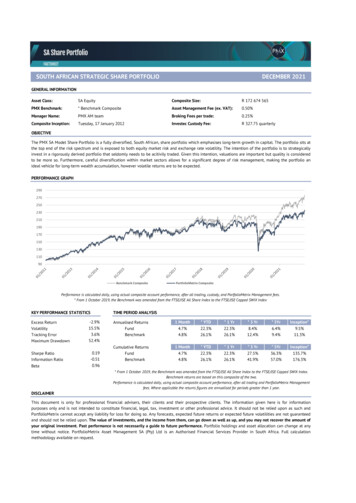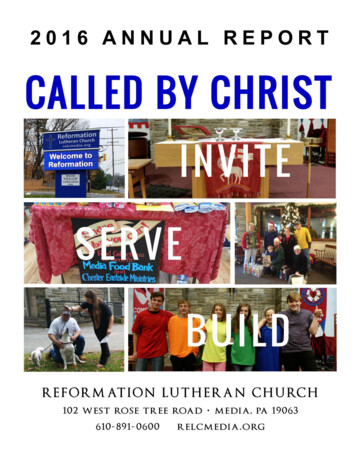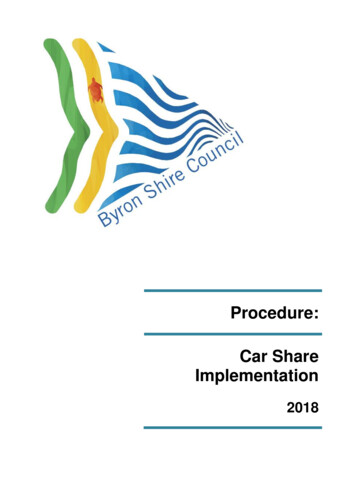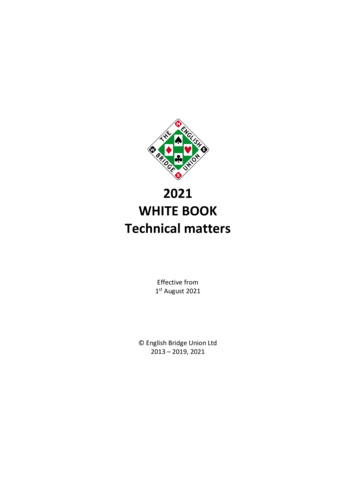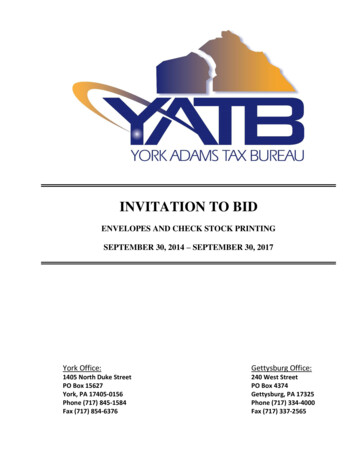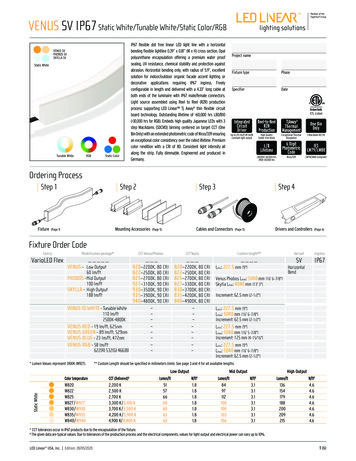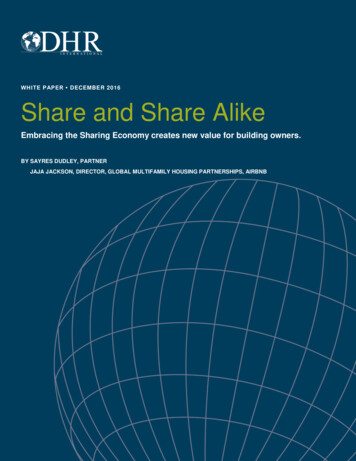
Transcription
WHITE PAPER DECEMBER 2016Share and Share AlikeEmbracing the Sharing Economy creates new value for building owners.BY SAYRES DUDLEY, PARTNERJAJA JACKSON, DIRECTOR, GLOBAL MULTIFAMILY HOUSING PARTNERSHIPS, AIRBNBCopyright 2016 DHR International, Inc. All Rights Reserved.Share and Share Alike 1
The sharing economy, sometimes called the peer economy, hashad a significant impact on the expectations and wants ofExecutive Summaryconsumers. It continues to grow, particularly among the UnitedStates’ 83 million millennials who have been much covered in themedia. Their influence is reflected in a new socioeconomicsystem that relies heavily on sharing resources.Uber, Zipcar and Airbnb are services that have developed in response to this mindset.Buyers are shopping for convenience on a budget, and farsighted sellers are finding waysto profit from this dynamic. “Gone are the days of self-serving ownership,” according toEntrepreneur.com. “Community sharing and mass enjoyment are the ‘now’ trends.”This shift in how consumers shop for goods and services, and how they prioritize theirpurchasing decisions, is being demonstrated in virtually every consumer centric industry,including residential real estate. And, in what has been recognized as a dramatic shift inthat world, the majority of consumers prefer to rent rather than buy. According to HarvardUniversity’s State of the Nation Housing 2016 study, the rental market continues to affecthousing recovery, with over 36% of US households opting to rent in 2015 – the largestshare since the 1960s. Indeed, the number of renters increased by 9 million over the pastdecade, the largest ten-year gain on record. Rental demand has risen across all agegroups, income levels and household types, with large increases among older renters andfamilies with children.In fact, according to the Wall Street Journal, renters not only make up most of thepopulation in nine of the nation’s 11 largest metro areas, including high density areas suchas Chicago, New York and San Francisco, but in lower density, relatively inexpensivecities, such as Houston and Dallas.Changing patterns aside, the primary wants of both parties, owners and renters, remainthe same. The former wants to maximize rents with a minimum of investment. The latterwants quality, community and convenience at the lowest possible cost. This inherenttension can, and often does, cost money to both parties, especially owners. A departingtenant pays only for his or her move and security deposits at a new home, but the averagecost of replacing a tenant is equivalent to three months’ rent – not including the actual rentlost during the vacancy.The owner who is cognizant of, and responsive to, the amenities and benefits that tenantsseek, will strive to achieve the balance between residents’ wants and expectations. Arecent survey by the National Multifamily Housing Council (NMHC) found that tenantsprioritize: Location, with easy access to schools, entertainment and grocery stores Assurance that delivered packages are securely held for them and available for easypick upCopyright 2016 DHR International, Inc. All Rights Reserved.Share and Share Alike 2
Connectivity for both internet and mobile devicesPet friendliness, including community bathing facilities, dog park, etc.The ability to pay rent onlineOther evolving demographic factors should play into owners’ decisions to leverage theirproperties to create value for both themselves and tenants. Per the Pew Research Centerand the New Jersey Institute of Technology and PwC Digital Services: 72% of Americans have used at least one kind of shared or on-demand service, and ofthat number:o86% believe that it makes life more affordableo80% believe that it makes life more convenient and efficiento78% believe it builds a stronger communityo89% believe it is based on trust between providers and usersProfit-driven owners would be well advised to take into consideration the changingdemographics and priorities of renters in this new, dynamic, shared economy to createwin/win scenarios for themselves and tenants. Owners must begin to think about theowner-resident relationship as a partnership that presents opportunities to create value forall concerned.These opportunities include:Car/Ride SharingUber and Lyft have become almost ubiquitous both in terms of their presence andbusiness model. According to PwC, 8% of all adults have participated in some form ofautomotive sharing. While convenience is a significant factor in the growing visibility andpopularity of these taxi-like services, another is that of car ownership.The US Public Interest Research Group (PIRG) reported that between 2001 and 2009driving by young people decreased by 23%. Michael Sivak, a research professor at theUniversity of Michigan’s Transportation Research Institute and who studies the trend,said in the New York Times, “I think that means something more fundamental is goingon.”The change presents a mutually beneficial opportunity to both management and tenants.William Fulton, Director of the Kinder Institute for Urban Research at Rice University,writes: “people want and need convenient and immediate access to cars at any time. Butthe traditional approach to parking supposes that what people want is convenient andimmediate access to one car that they own. Car-sharing services operate under thetheory that it doesn’t matter which car people travel in, so long as one is availableimmediately.”Copyright 2016 DHR International, Inc. All Rights Reserved.Share and Share Alike 3
Services like Zipcar, Car2Go and Enterprise Carshare are continually seeking parkingspaces in densely populated areas, and are eager to make deals with surprisingpartners. Zipcar has rented parking spaces from a high school and a church inWilliamsburg, Virginia. In 2011, the District of Columbia’s District Department ofTransportation opened public parking spaces to bid, with a minimum of 3,600 perspace, eliciting responses from Zipcar, Hertz, Daimler, and Enterprise.Even in smaller cities without robust public transportation systems or plentiful taxicabs,developers are recognizing that it is to their benefit to partner with car sharing services.Gold Crown Properties in Kansas City, Missouri, for one, is redeveloping a historic hoteland bus station, the Pickwick, into market-rate rentals downtown and have contractedwith Zipcar to have cars on the premises.The opportunity that car sharing presents to landlords and HOAs with available parking,and tenants disinclined to own cars, is obvious: Tenants have more disposable income. According to the AAA the average cost ofowning a car in 2015 was nearly 8700 a year. Trends in tenant characteristics and preferences can be monetized for profit. DennisBurns of Kimley-Horn & Associates, who lectures and writes about land use issuesaround parking, points out that in some areas the zoning requirements for parking canbe reduced by a building’s proximity to transit lines, or by providing space for bikesharing. “That can save a developer 20,000- 40,000 per space,” he says. “There’s areal incentive there to reduce the amount of parking.” A valued service that attracts and retains tenants becomes a value add for owners.“Zipcar’s presence allows us to go after people that don’t have cars and use more publictransportation or ride their bikes,” says William Hayes of Gold Crown Properties. “Theydon’t want to take on the expense and burden of a car, but if they need one there is onesitting there waiting for you. It’s all done through app. Reserve it, walk downstairs anddrive away. It’s a phenomenal opportunity.”Home SharingHome sharing services, such as Airbnb and VRBO, continue to grow in popularity,especially with those under age 45 and over 60. Another survey by the NMHC foundthat more than a third of the leaders of the nation’s largest apartment firms are open tocooperative, codified partnerships with residents who want to list their homes on shortterm rental sites. That same survey showed that 43% of those leaders have residentswho are doing so.Copyright 2016 DHR International, Inc. All Rights Reserved.Share and Share Alike 4
Conflict between tenants and owners around home sharing needn’t be a given. Manysuch tensions grow out of tenants’ reluctance to broach the subject with owners. Enteringinto active partnerships with tenants who want to participate in these services caneliminate stress for landlords, HOAs and tenants, and solidify relationships all around.Airbnb has created a property management tool called the Airbnb Friendly BuildingsProgram designed to support the community rules and execute a profit share thatbenefits the building owner, neighbors and resident hosts.Owners who appreciate that participation in home sharing services will continue to growcan manage home sharing as an amenity, including establishing frequency caps andkeeping a portion of those fees in exchange for the security, extra income andconvenience enjoyed by the tenants. In addition, fellow tenants may be more receptivewhen they know that the process is being handled with respect for the needs of allparties involved, and they know which units will be occupied, when and for how long.They may also be more comfortable knowing that there is a limit on how many units maybe occupied by travelers, and more receptive to business travelers who will stay from afew weeks to a few months, as opposed to the weekend guest.Proactive engagement with tenants around home sharing benefits owners. Takingownership of home sharing activities recognizes that: It can be a win/win for all parties.oIn September 2016, Fortune.com reported on the Airbnb Friendly BuildingProgram, in which building owners work with Airbnb and tenants to allow homesharing per rules set by owners who will share the revenues with participatingtenants. Home sharing is happening on a large scale, with or without permission from owners.oWork-arounds are being sought and developed, including lease amendmentsthat address tenants’ assumption of liability, including insurance; advancewritten notice; additional security deposits; pre-screening of guests by owner;and a percentage of profits shared with the owner.Community GardensAccording to the National Gardening Association more and more people are growing theirown food. Between 2008 and 2013 the number of households that grew food at homeincreased 17%, from 36 million to 43 million, and participants have been estimated to save 75 to 380 in food costs every season.Copyright 2016 DHR International, Inc. All Rights Reserved.Share and Share Alike 5
Properties with available green space can capitalize on this growing interest by offeringplots to tenants for a nominal monthly fee, or participate even more actively by providingseeds, tools, water hoses, etc. And the benefits go beyond convenience for the tenant andgoodwill toward management. They include: Improved property values. GardeningMatters.org reports that community gardens havea positive impact on property values within the immediate vicinity - an average of 24.77per square foot in Milwaukee, for instance. Developing and maintaining garden space is less expensive than landscaping, in partbecause gardens require little land, and 80% of a garden’s cost is labor, presumablyprovided - for the purposes of this report - by tenants.WorkspaceThe growth of the gig economy is outpacing hiring overall, with work and living spacesconverging to meet the needs of professionals, and not just millennials. A Gallup study in2015 showed that baby boomers are twice as likely to start a business than millennials.What both demographics have in common is that they seek, and are willing to pay for,housing and amenities that enhance a lifestyle that blends home and work in such a waythat’s convenient for them.With nearly half the population working from home, owners looking to proactively bringvalue-add to their tenant relationships would be wise to address the needs of theseworkers. Providing office space, a conference room, a fax line, internet access, etc. tothose tenants on either an as needed/fee per use basis, or unrestricted access for amonthly fee that would be well below the market rate for conventional office space, whileit significantly enhances the work/home experience for the tenants.In fact, Forbes reports that some developers, such as Boston-based BeaconCommunities and New York–based WeWork, have built live/work communitiesspecifically for business owners and entrepreneurs and, says Caitlin Walter, seniorresearch analyst for the Washington, D.C. based National Multifamily Housing Council(NMHC), “residents are definitely driving the trend to provide business-support servicesin apartment communities.” She even cites an example of a developer adding abusiness center to a recently built property “because the residents wanted one.”Statistics support the viability of live work space and the value proposition it presents toowners: 45% of American workers work from home, according to the New Jersey Institute ofTechnology The number of full-time independent contractors and freelancers increased by 12% overthe last five years. MBO Partners projects that 40 million Americans will be self-employed by 2019.Almost 500,000 Americans will work from home at least one day a week by 2018,according to a study by the Telework Research Network.Copyright 2016 DHR International, Inc. All Rights Reserved.Share and Share Alike 6
Etsy, eBay andCraigslistThe business of selling online will only continue to grow. Owners who recognize anopportunity in that space may offer support and services that range from providing acommunal space for craftsman and artists who utilize Etsy, or other similar services. Thatspace may include storage lockers for materials, cleaning supplies and sinks, and workareas that allow tenants to move their “business” out of their living spaces.Craigslist and eBay provide opportunities, as well. A dedicated space for items for sale bytenants provides value, not only in terms of storage, but as a secure space for tenants tomeet buyers and complete transactions. Critical issues to be resolved are insurancecompany regulations and issues of liability. This new economy requires creative and openinput from the insurance carriers in partnership with landlords and tenants.Statistics alone warrant that owners consider embracing peer-to-peer buying and sellingservices: 60% of home-based businesses in the US are selling products through eBay.As of March 2015, Etsy was one of the top ten most popular retail websites in the UnitedStates, ranked by average number of monthly visitors and, as of 2014, in the top fiveleading web-only merchants in the US ranked by e-commerce sales. ConclusionMore than 60 million people use Craigslist each month in the US alone.Whichever tactics an owner may decide to pursue, it is imperative that the benefits to thetenant be tangible and obvious, whether it be in terms of convenience or added value fornominal fees. The multi-family building owner’s acceptance of the new paradigm aroundlifestyles, work practices and the peer economy will facilitate the creation of policies andamenities that, in the end, support the owners’ real goals: fewer move outs, longer andmore congenial relationships, brand loyalty and referrals.Copyright 2016 DHR International, Inc. All Rights Reserved.Share and Share Alike 7
Established in 1989, DHR International is one of the largestretained executive search firms in the world, with more than50 offices around the globe. We conduct searchassignments at the board of director, C-level and functionalvice president levels. DHR’s renowned consultantsspecialize in all industries and functions in order to provideunparalleled senior-level executive search, managementassessment and succession planning services tailored to theunique qualities and specifications of our select client base.DHR InternationalWorldwide Headquarters71 South W acker DriveSuite 2700Chicago, IL 60606P 312.782.1581 F 312.888.9346dhrinternational.comCopyright 2016 DHR International, Inc. All Rights Reserved.Share and Share Alike 8
Services like Zipcar, Car2Go and Enterprise Carshare are continually seeking parking spaces in densely populated areas, and are eager to make deals with surprising partners. Zipcar has rented parking spaces from a high school and a church in Williamsburg, Virginia. In 2011, the District of Columbia's District Department of

